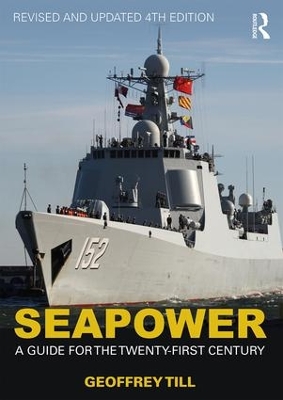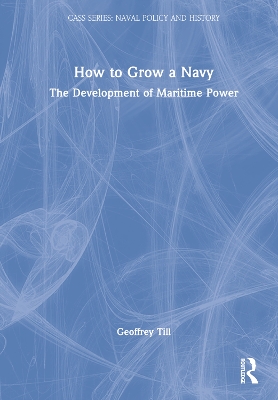Cass Series: Naval Policy and History
1 primary work • 2 total works
Book 32
This is the fourth, revised and updated, edition of Geoffrey Till's Seapower: A Guide for the Twenty-first Century.
The rise of the Chinese and other Asian navies, worsening quarrels over maritime jurisdiction and the United States’ maritime pivot towards the Asia-Pacific region reminds us that the sea has always been central to human development as a source of resources, and as a means of transportation, information-exchange and strategic dominion. It has provided the basis for mankind's prosperity and security, and this is even more true in the early twenty-first century, with the emergence of an increasingly globalised world trading system. Navies have always provided a way of policing, and sometimes exploiting, the system. In contemporary conditions, navies, and other forms of maritime power, are having to adapt, in order to exert the maximum power ashore in the company of others and to expand the range of their interests, activities and responsibilities. While these new tasks are developing fast, traditional ones still predominate. Deterrence remains the first duty of today’s navies, backed up by the need to ‘fight and win’ if necessary. How navies and their states balance these two imperatives will tell us a great deal about our future in this increasingly maritime century. This book investigates the consequences of all this for the developing nature, composition and functions of all the world's significant navies, and provides a guide for anyone interested in the changing and crucial role of seapower in the twenty-first century.
Seapower is essential reading for all students of naval power, maritime security and naval history, and highly recommended for students of strategic studies, international security and international relations.
This book examines the large but neglected topic of the development of maritime power from both an historical and a contemporary point of view.
Navies have never been more important than they are now, in a century becoming, as widely expected, increasingly and profoundly maritime. The growing competition between China and Russia with the United States and its allies and partners around the world is essentially sea-based. The sea is also central to the world's globalised trading system and to its environmental health. Most current crises are either sea-based or have a critical maritime element to them. What happens at sea will help shape our future. Against that background, this book uses both history and contemporary events to analyse how maritime power and naval strength has been, and is being, developed. In a reader-friendly way, it seeks to show what has worked and what has not, and to uncover the recurring patterns in maritime and naval development which explain past, present and future success - and failure. It reflects on the historical experience of all navies, but in particular it poses the question of whether China is following the same pattern of naval development illustrated by Britain at the start of the 18th century, which led to two centuries of naval dominance.
This book will be of much interest to students of maritime power, naval studies, and strategic studies, as well as to naval professionals around the world.

